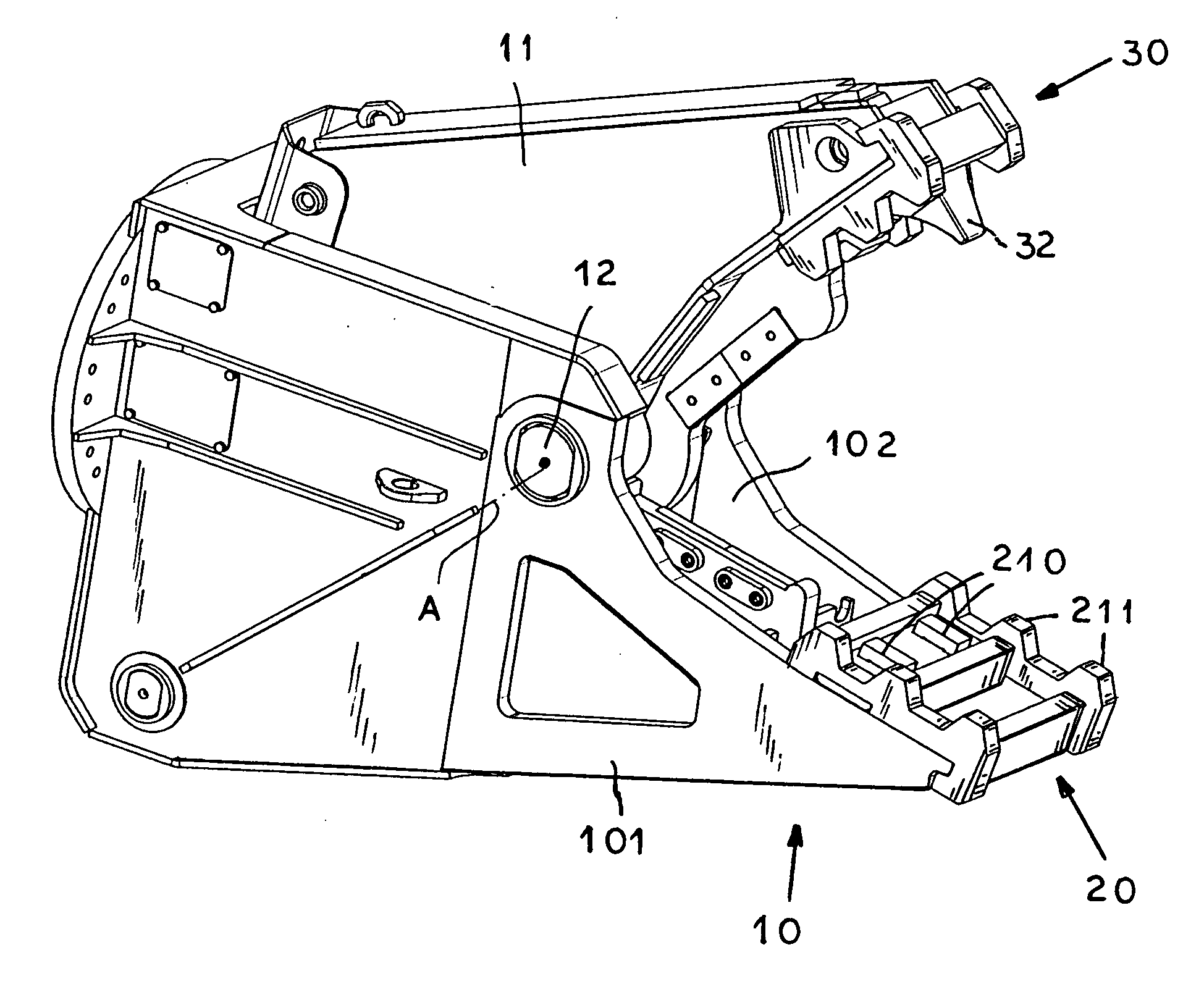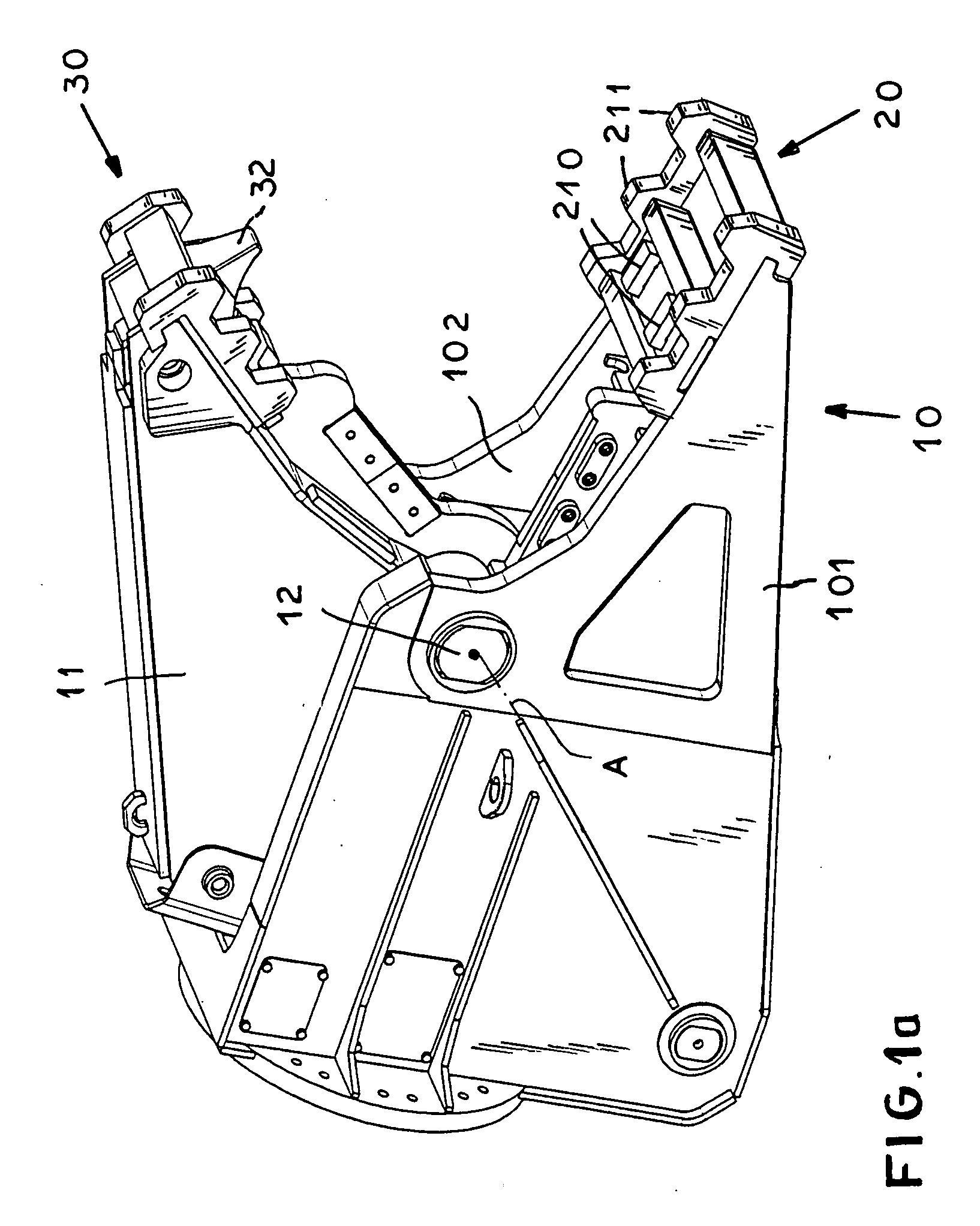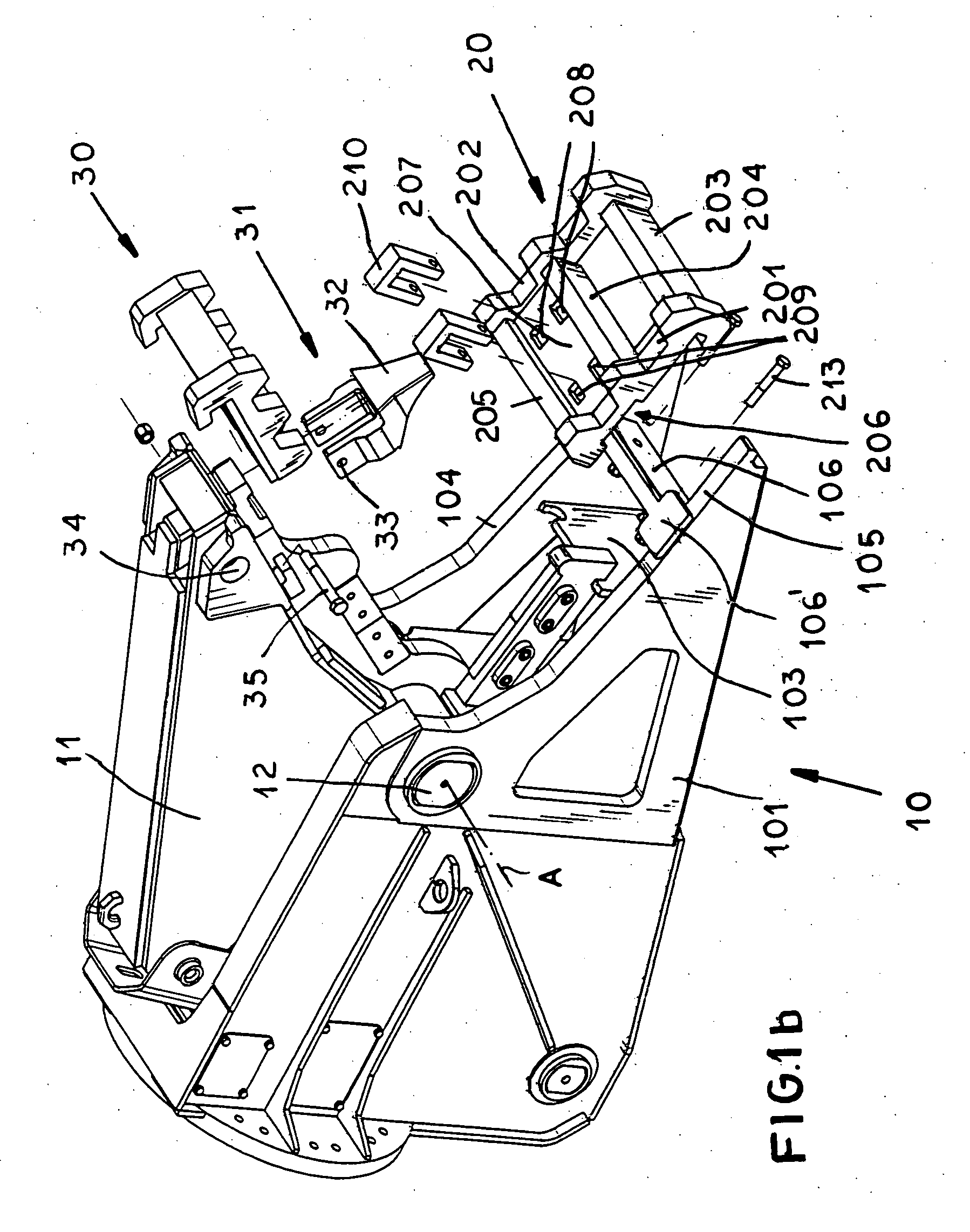Demolition claw
- Summary
- Abstract
- Description
- Claims
- Application Information
AI Technical Summary
Benefits of technology
Problems solved by technology
Method used
Image
Examples
Example
[0035]As seen in FIG. 1a, a demolition claw has two jaws 10 and 11, the lower jaw 10 having two cheek plates 101 and 102 spaced along a pivot axis A from each other and connected by a transverse bar or member 103, although several such members 103 could be used. A wear shoe 20 is mounted on the inner face of the jaw 10. The jaw 11 has a closed design, and is provided as a support for a wear shoe 30 mounted on its inner face, that is its face turned toward the inner face of the jaw 10. In the illustrated embodiment, the upper jaw 11 is movable about axis A of the joint 12 so that at its inner face of the upper jaw can be moved in the direction toward and away from the inner face of the stationary lower jaw 10.
[0036]The wear shoe 20 has longitudinal members 201 and 202 that are connected to one another via transverse members 203, 204, and 205. The parallel cheeks 101 and 102 have inner support edges 104 and 105 that carry the longitudinal members 201 and 202, and that therefore form t...
PUM
| Property | Measurement | Unit |
|---|---|---|
| Pressure | aaaaa | aaaaa |
Abstract
Description
Claims
Application Information
 Login to View More
Login to View More - R&D
- Intellectual Property
- Life Sciences
- Materials
- Tech Scout
- Unparalleled Data Quality
- Higher Quality Content
- 60% Fewer Hallucinations
Browse by: Latest US Patents, China's latest patents, Technical Efficacy Thesaurus, Application Domain, Technology Topic, Popular Technical Reports.
© 2025 PatSnap. All rights reserved.Legal|Privacy policy|Modern Slavery Act Transparency Statement|Sitemap|About US| Contact US: help@patsnap.com



